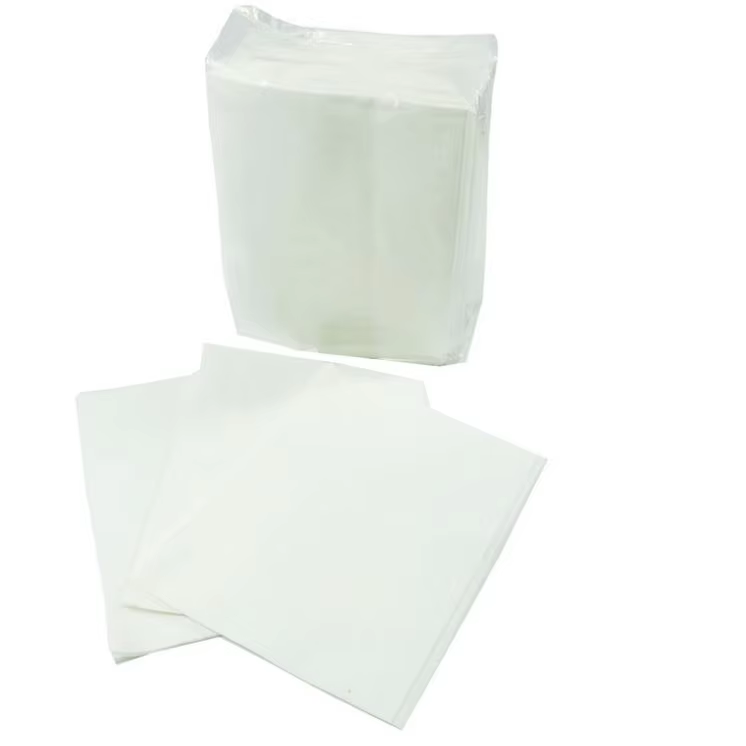Contact Info
200 meters east of Xihuang Village Committee, Linchi Town, Zouping City, Binzhou City, Shandong Province (China)
In everyday life and in the medical field, absorbent products are very important. For babies, the elderly who are less mobile, and even patients in hospitals, the right absorbent products ensure comfort and help prevent skin issues. However, the right absorbent product is not always easy to find. There is a need to balance the two most important components: absorbency and skin friendliness. High absorbency means the absorbent product is able to hold excess moisture and prevent leakage. Skin friendliness means the product will not irritate the skin or cause allergies after prolonged use. By evaluating these two factors, one will be able to choose the right absorbent product.
Absorbent products of high quality will always have high absorbance. For long-term users, such as the elderly or bedridden patients, high absorbance products lessens the frequency the product needs to be replaced. This helps save time and work, and also allows the user to rest uninterrupted. Furthermore, high absorbance means the product can rapidly absorb and lock away large amounts of moisture.

Absorbent products that are insufficiently absorbent can allow for leakage which subsequently can wet bed sheets, clothing, and even the user’s skin. When wet absorbent materials come in prolonged contact with the skin, the skin can become soft and fragile, and increase the risk for skin redness, inflammation, and even bedsores. The absorbent products skin absorbency capacity and reviews are defend actions being, skin absorbent products being various absorbent and reviews.
Furthermore, skin friendliness is an equally important aspect that should be considered when selecting absorbent products. The skin of babies, the elderly, and patients is more sensitive and fragile compared to that of healthy adults. An absorbent product that is not skin friendly may have rough, irritating materials, including harsh chemicals, fragrances, or dyes. Prolonged contact of the product with skin will aggravate skin, and the product may bring itching or rashes as reaction. Moreover, the top layer of the absorbent product can determine its skin friendliness. Having a soft, breathable surface will minimize the friction.A rough, non-breathable surface can make skin feel clamy and contribute to the accumulation of sweat. Because of this, it is extremly important that phrases like, "hypo-allergenic, non-fragranced " be the marketingy taglines on absorbent material you purchase.
The elements needed to devise a system which can deliver extreme absorbency while still being safe for the skin, encapsulates numerous elements, the first being the absorbent material of the core itself. The best cores combine super absorbent polymers (SAP) with soft cellulose, which not only improves moisture absorption levels, and keeps the surface dry, but also keeps the skin contact moisture at a minimum and most importantly, prevents active moisture retention. The construct design is also important. Multi-layer absorbent products, for instance, improve safety and moisture management. The top cover is moisture-wicking to keep the skin dry and soft, the center locking core is moisture absorbing, the waterproof bottom layer prevents moisture seeping for a leakproof finish. This construct improves efficiency, keeping moisture on the top and preventing paradoxical moisture.
Third, the pH of the absorbent product must be close to the pH of human skin. The skin's pH is mildly acidic, which helps to protect the skin barrier. If the absorbent product's pH is too high or too low, the skin barrier may be compromised, leading to increased irritation potential.
There are several real - life scenarios in which absorbent products that balance high absorbency and skin friendliness positively impact the situation. In a nursery, for example, infants have soft skin and must wear diapers (which are a type of absorbent product) for prolonged periods. A high absorbency diaper will keep the infant's skin dry for longer periods which decreases the frequency of diaper changes and helps the infant to sleep more peacefully. In addition, a skin - friendly diaper will help to prevent diaper rash, a frequent problem in infants. A similar circumstance is in a nursing home. The elderly there may require adult diapers or absorbent pads.

The elderly benefit greatly from better absorbent products that are super absorbent and skin friendly. They provide comfort and protect their skin from moisture-related infections. Also, they help nursing staff spend less time changing products and more time providing quality patient care.
Testing Absorbent Products
There are ways to ensure you are buying absorbent products that are absorbent and skin friendly. One way to determine absorbency is to simulate testing with a small bowl of water. Pour a small amount of water on the absorbent pad you are testing. Time how long it takes for the pad to absorb moisture and see how much moisture is left on the surface. An acceptable pad should absorb moisture quickly with minimal surface moisture. For skin friendly testing, take a small piece of the absorbent pad material and stick it to your wrist for 24 hours. If you see no signs of a rash, the pad is skin friendly. Also, refer to the certifications on the product and review other reviews to gauge the responsiveness and quality of the product.
When a product has relevant certifications and good customer reviews, it is more likely to satisfy the criteria of high absorbency and skin friendliness.